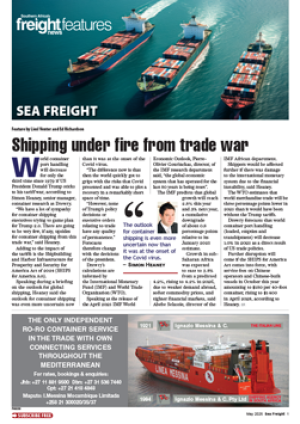Diamonds add sparkle Late last year the International Monetary Fund (IMF) commended the Government of Lesotho for progress on its macro-economic reforms (its budget and current account) and the country’s own Central Bank expects the budget for the full 2005/6 financial year to be in surplus rather than the forecast deficit of about 250 million Maluti (R250m). This expected surplus is largely on the back of higher than expected payments from the South African Customs Union. These payments provide the major portion of the Lesotho national budget with further remittances from Lesotho nationals working on mainly South African mines also making a major contribution. It’s a welcome injection as the country desperately needs to introduce two key elements to future economic success – skills enhancement and provision of seed finance for small business. A recent study of Lesotho’s economic prospects reflects that the country has not accumulated any arrears in its public debt. But despite this acceptable performance in the servicing of its debt, it is still not eligible for debt relief provided to Highly-Indebted Poor Countries (HIPCs) that seek a 100% cancellation of outstanding obligations to the IMF, World Bank and African Development Bank as it still does not meet certain requirements. However, the possibility of a “debt swap” is an alternative whereby creditor countries cancel a percentage of the debt and transform the rest into local currency for additional investment in national development priorities. According to the study the real Gross Domestic Product for 2005/2006 will be significantly down on forecasts, largely due to the slump in the textile industry. However, the report says that the slump should be partially offset by diamond exports. The Letseng diamond mine became operational in 2004 and this helped to expand the Lesotho government’s revenue base as diamond exports to mainly Europe accounted for around 12% of the total 2004 exports. This mine is expected to increase the value of its exports by about 40% annually on a regular basis, which will provide a boost to the fiscus. Negotiations for investment in another diamond mine, the Liqhobong, are at an advanced stage. It is hoped that many of the retrenched miners from South Africa can be absorbed into this sector in Lesotho. But this does not address a major development problem which exists within the country’s unemployed female population which provided the backbone of employment needs for the textile industry. There has also been a gradual reduction of the interest rate gap between South Africa and Lesotho that has slowly narrowed but a positive (unfavourable) differential in rates can be expected to be maintained, given Lesotho’s higher risk profile. South African inflation – and consequently its prices for the bulk of Lesotho’s imports – will continue to determine the country’s inflation. In line with the lower inflation presently being achieved in South Africa, the estimate for Lesotho is 4.7% in 2005 with expected averages around that mark for both 2006 and 2007. Of course the country remains vulnerable to exchange rate fluctuations and the volatility of the price of oil internationally – both impacting on logistics. It also has wage and salary pressures for which to cater and these could affect its inflation.
